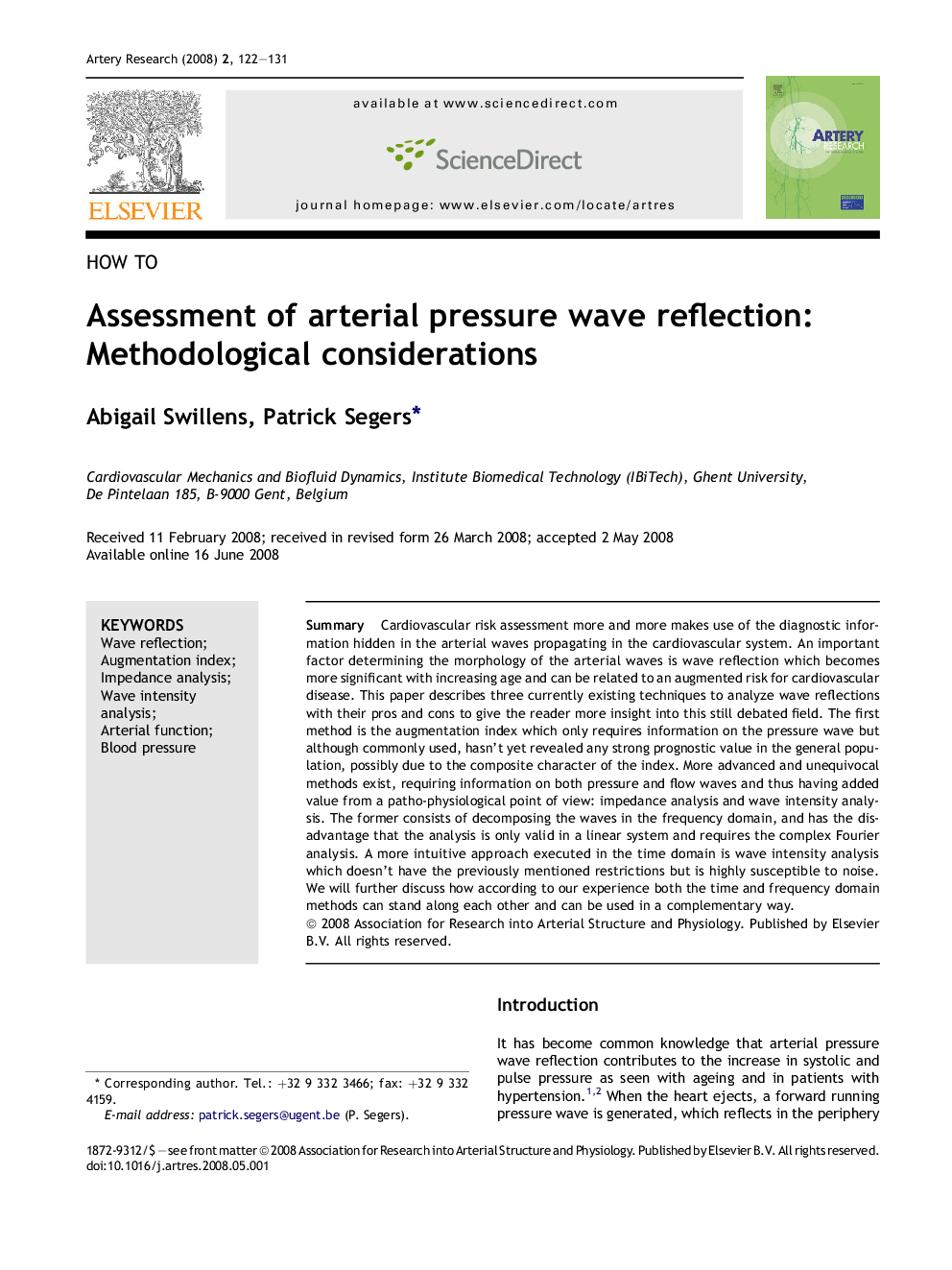| Article ID | Journal | Published Year | Pages | File Type |
|---|---|---|---|---|
| 2892517 | Artery Research | 2008 | 10 Pages |
SummaryCardiovascular risk assessment more and more makes use of the diagnostic information hidden in the arterial waves propagating in the cardiovascular system. An important factor determining the morphology of the arterial waves is wave reflection which becomes more significant with increasing age and can be related to an augmented risk for cardiovascular disease. This paper describes three currently existing techniques to analyze wave reflections with their pros and cons to give the reader more insight into this still debated field. The first method is the augmentation index which only requires information on the pressure wave but although commonly used, hasn't yet revealed any strong prognostic value in the general population, possibly due to the composite character of the index. More advanced and unequivocal methods exist, requiring information on both pressure and flow waves and thus having added value from a patho-physiological point of view: impedance analysis and wave intensity analysis. The former consists of decomposing the waves in the frequency domain, and has the disadvantage that the analysis is only valid in a linear system and requires the complex Fourier analysis. A more intuitive approach executed in the time domain is wave intensity analysis which doesn't have the previously mentioned restrictions but is highly susceptible to noise. We will further discuss how according to our experience both the time and frequency domain methods can stand along each other and can be used in a complementary way.
